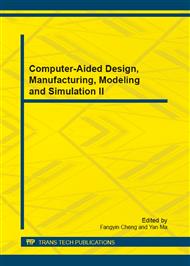p.84
p.89
p.94
p.99
p.103
p.108
p.113
p.118
p.122
Analysis on Hybrid Effects of Parallel Pneumatic Hybrid Vehicle
Abstract:
To reveal the potential and means of energy saving and emission reduction for the parallel pneumatic hybrid vehicle (PHV) proposed in this article, the comparison analysis between parallel PHV and conventional diesel vehicle (CDV) was made on the dive cycles of NEDC, UDDS, HWFET and JAPAN10-15 using the mathematic model. The results show: For the drive cycles of NEDC, UDDS, HWFET and JAPAN10-15, the PHV could decrease emissions by 58.84%, 38.76%, 14.54%, and 66.59% and save energy by 13.12%, 14.06%, -6.27% and 28.06% respectively com-pared to the CDV; Of the five hybrid means of shutting down the ICE at idle, regenerative braking, optimizing working area of ICE, using the exhaust heat of ICE and downsizing ICE, using the ex-haust heat of ICE along with shutting down the ICE at idle have the most impact on energy saving, and then is the downsizing ICE, but using exhaust heat would increase energy consumption; Opti-mizing working area of ICE and shutting down the ICE at idle have the greatest contribution to re-duction emissions, followed is also downsizing ICE. The efficiency of regenerative braking is very low, as well as the heat exchange efficiency of the adopted heat exchanger, requiring further opti-mization and design.
Info:
Periodical:
Pages:
103-107
Citation:
Online since:
December 2012
Authors:
Price:
Сopyright:
© 2013 Trans Tech Publications Ltd. All Rights Reserved
Share:
Citation:


